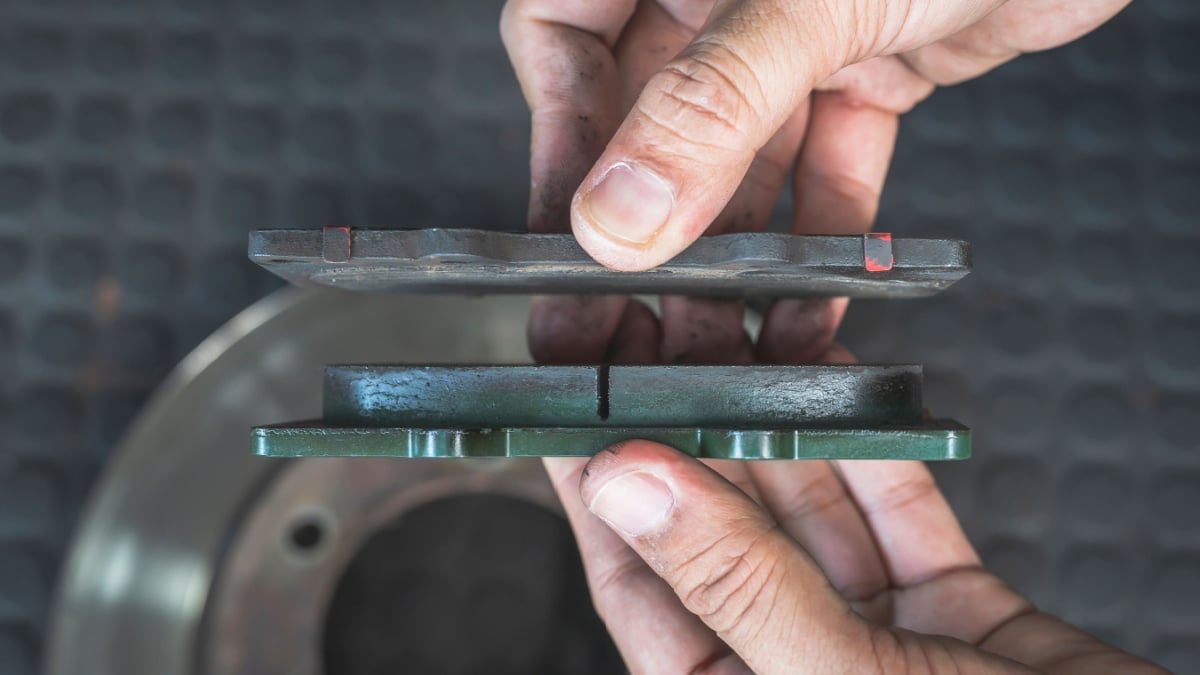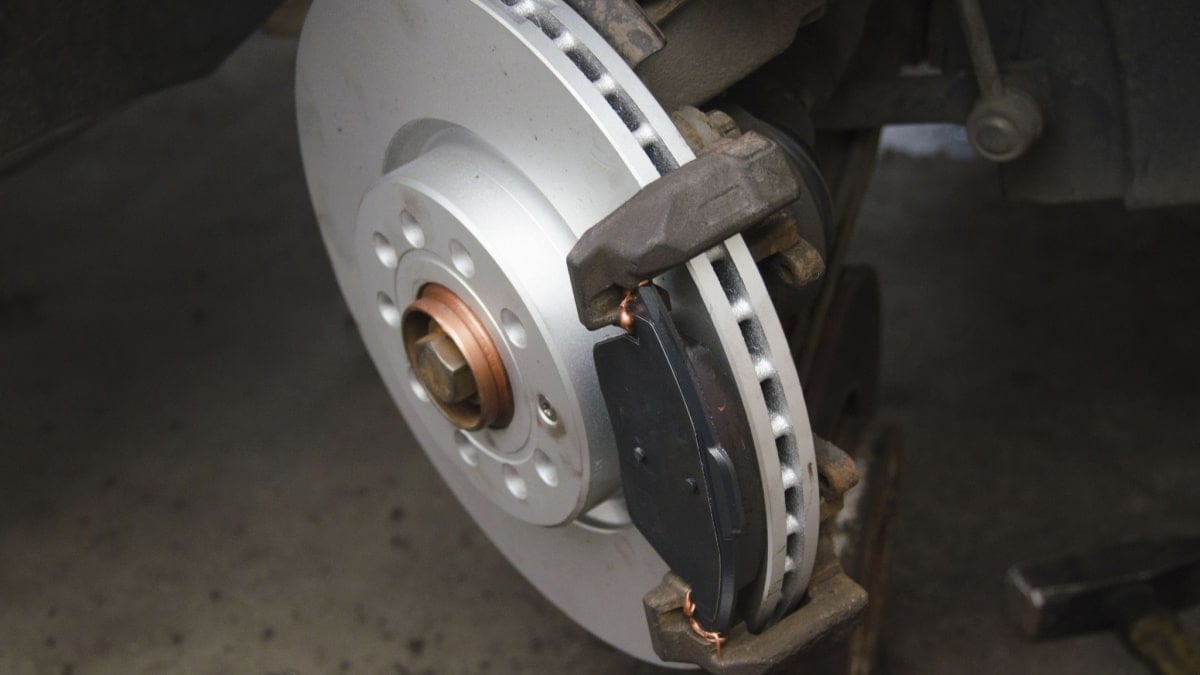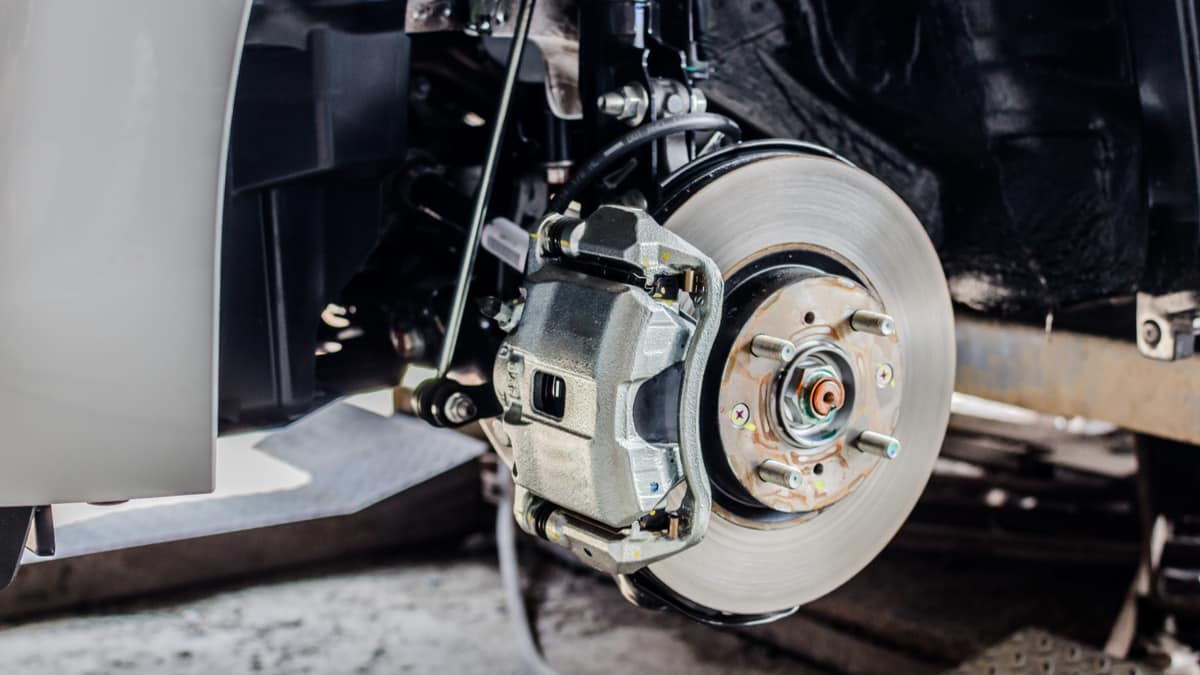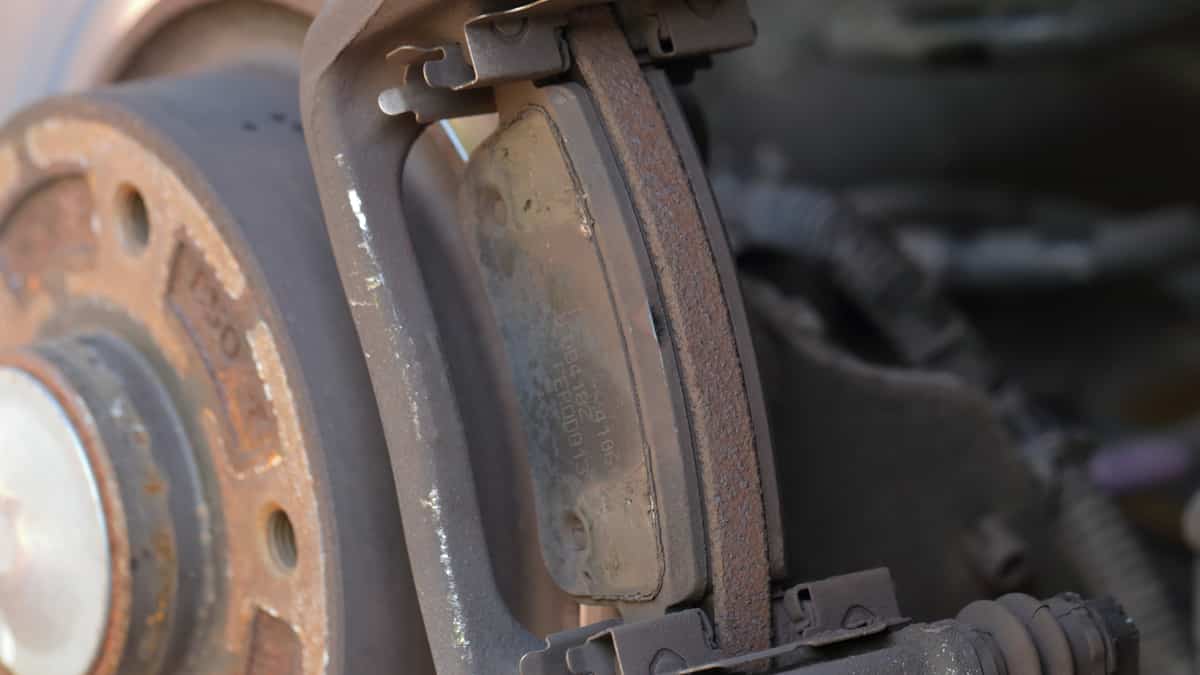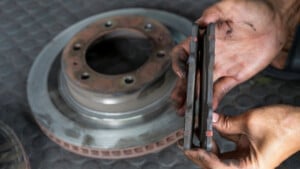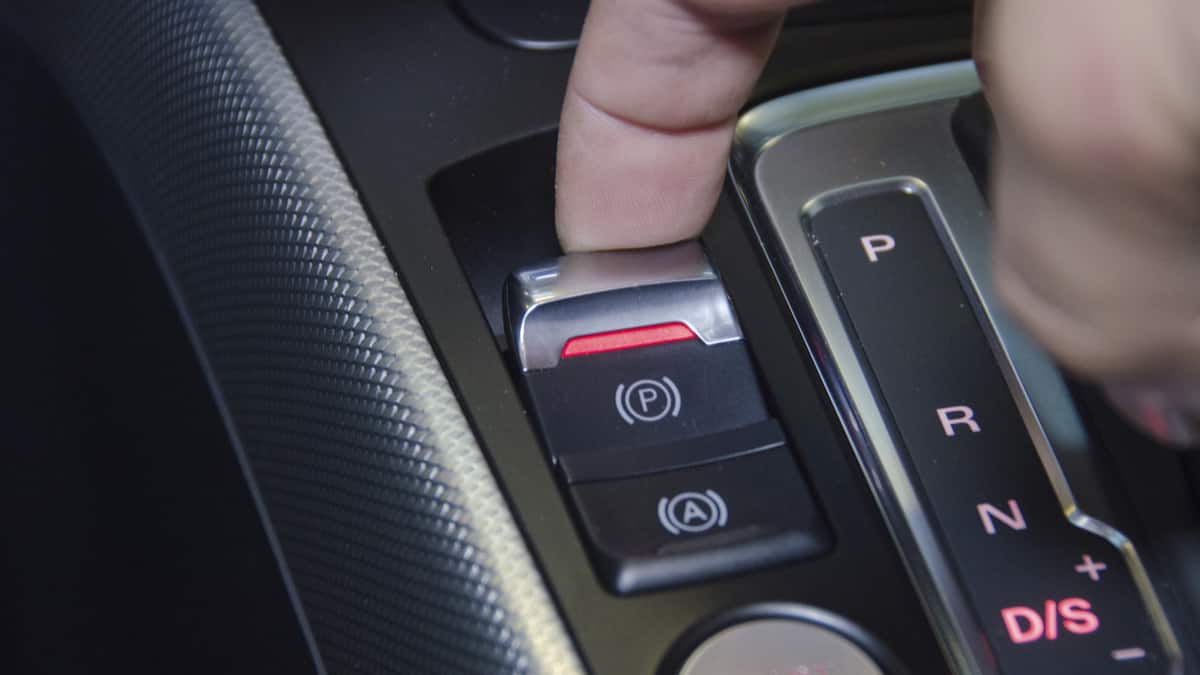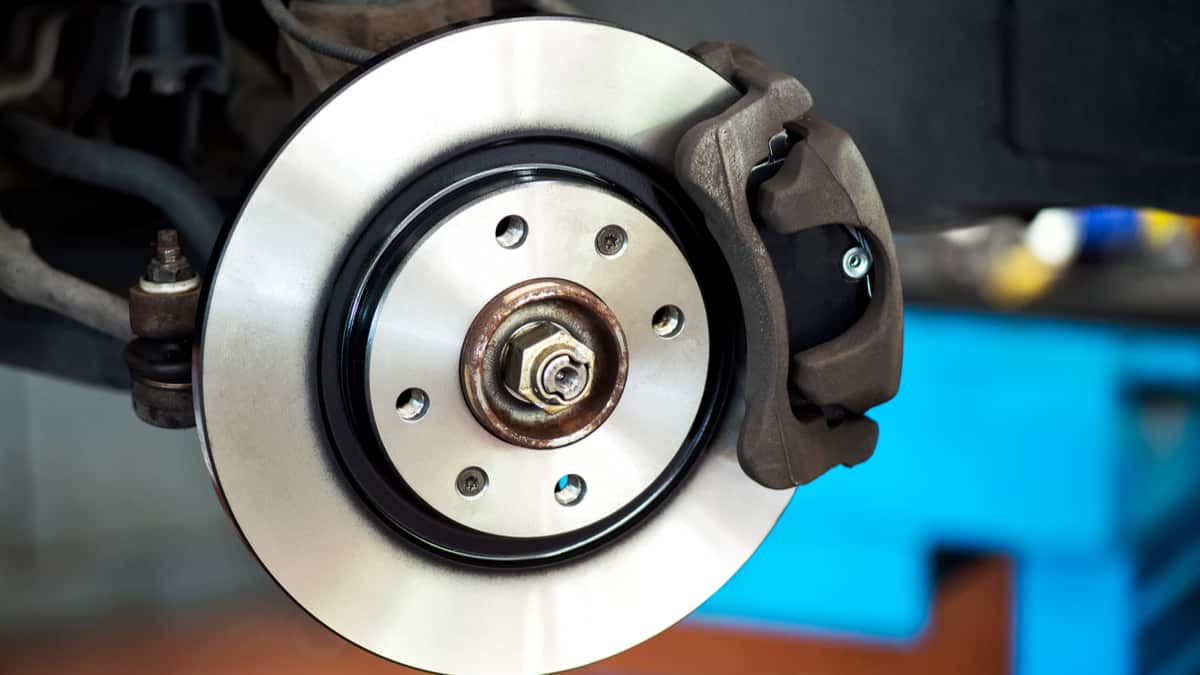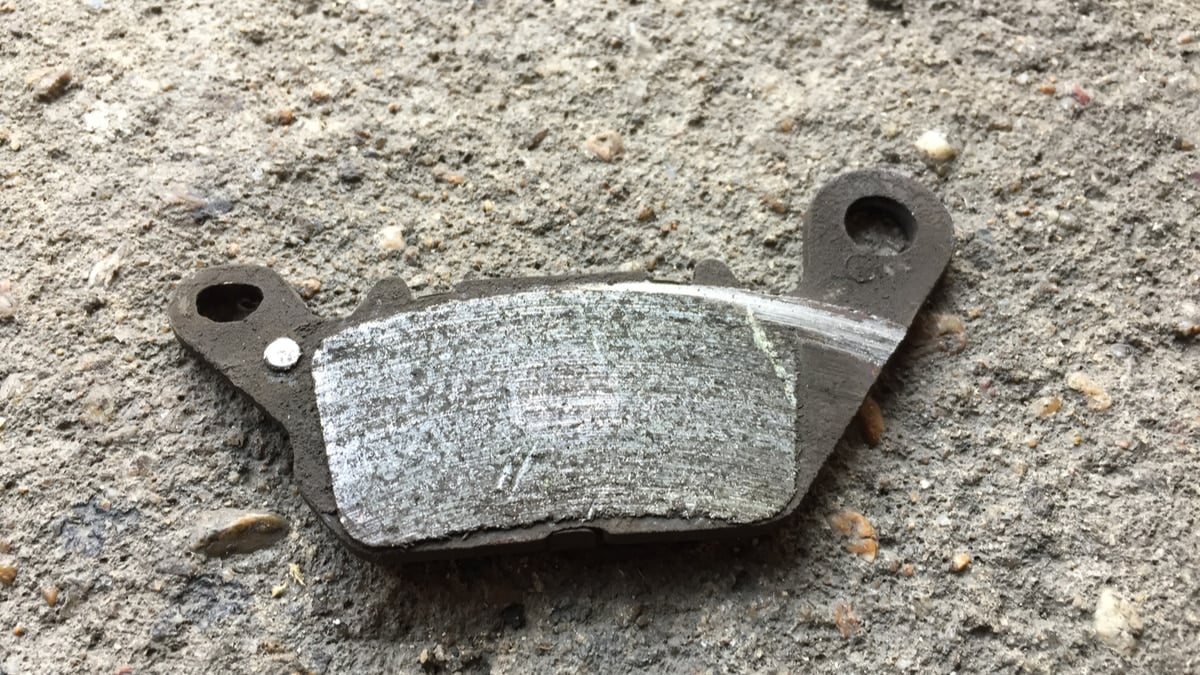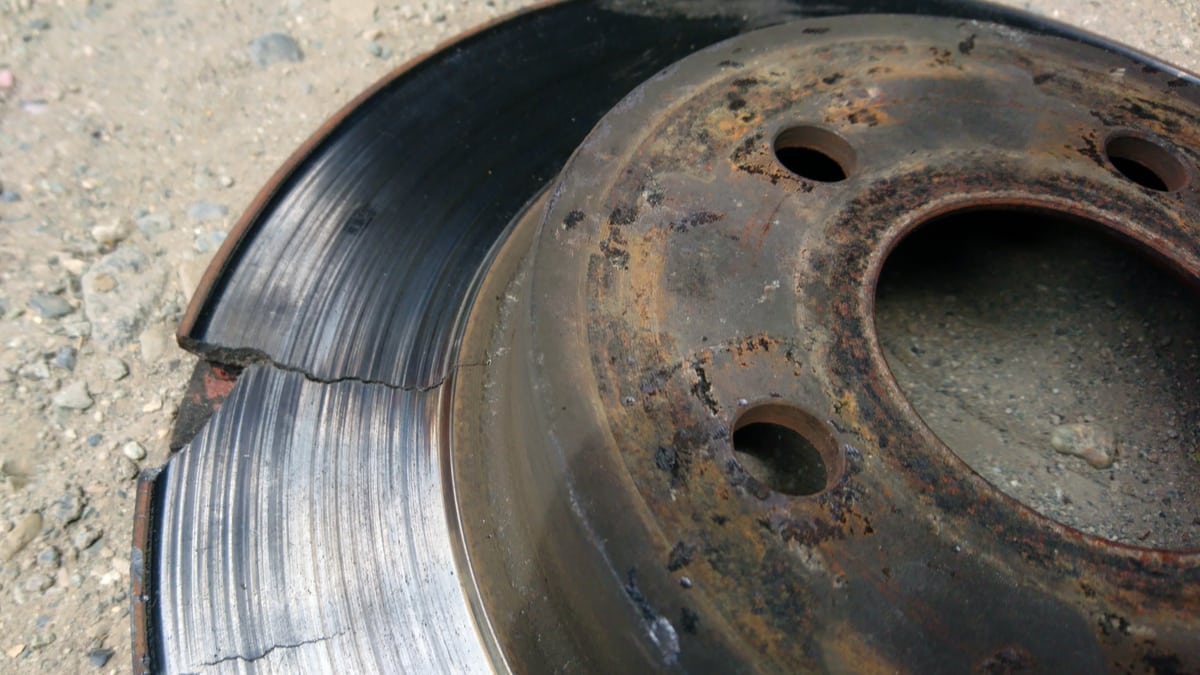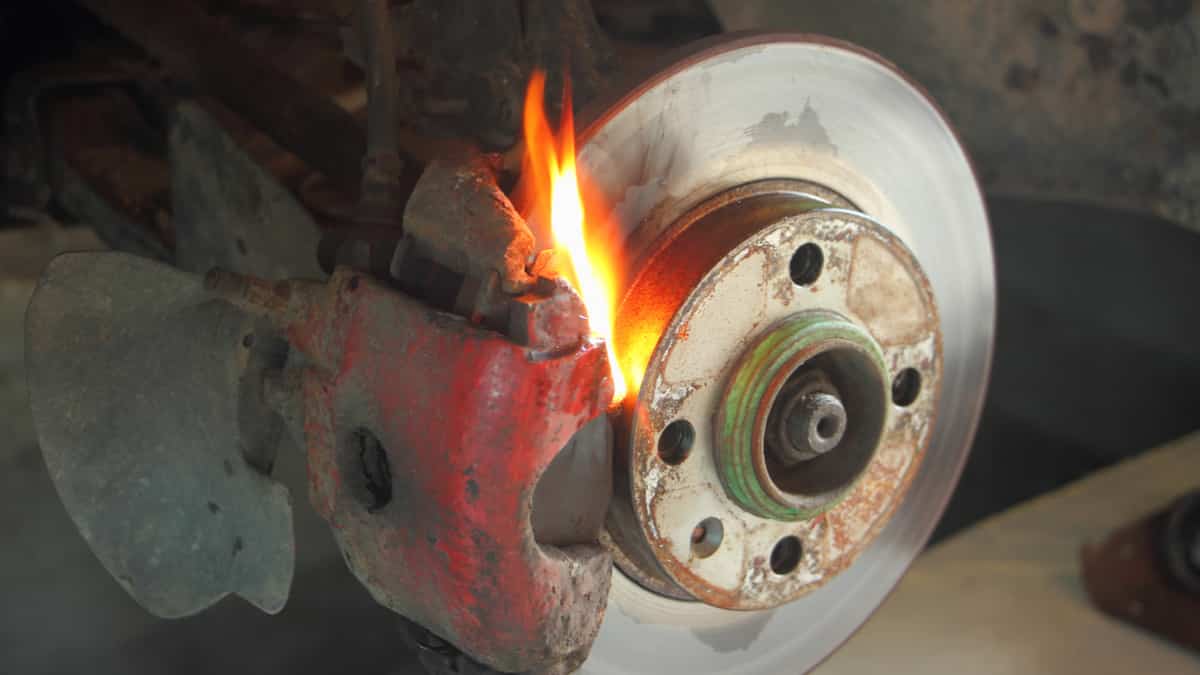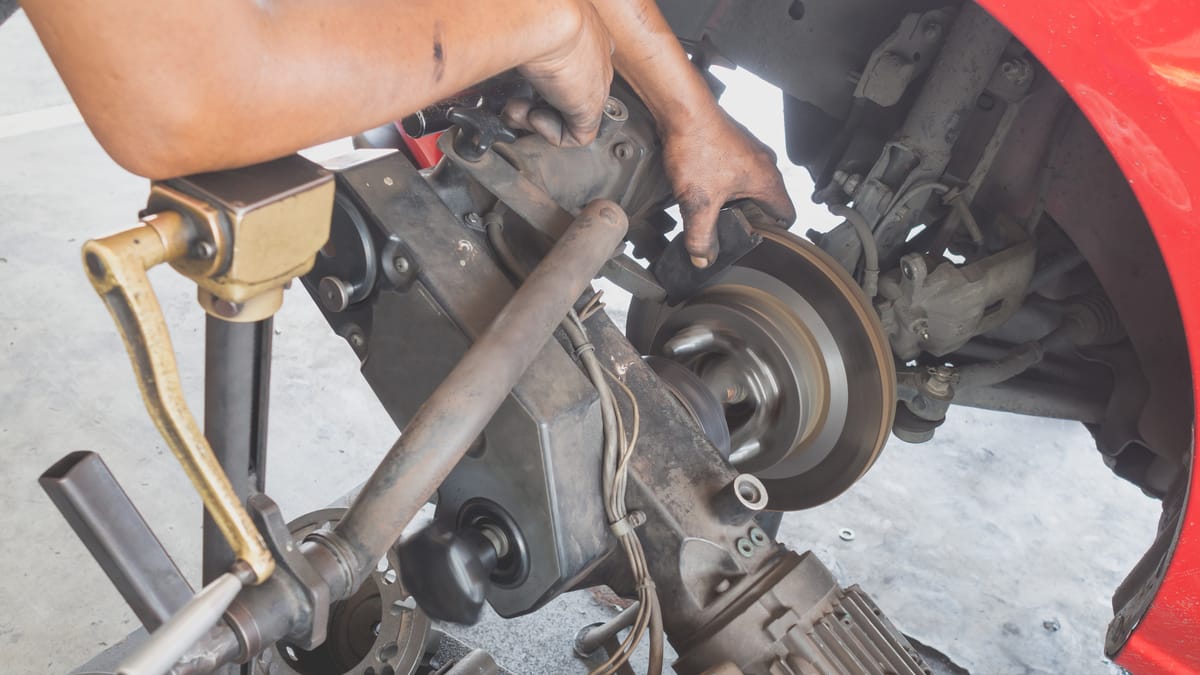Having a solid set of brakes on your car is imperative to stopping before an accident happens. To determine brake health, the pad thickness is often measured. As the brake pads become too thin, your on-road safety is compromised. That’s why it’s important to know the minimum brake pad thickness before they need to be changed.
In this guide, we cover every brake pad measurement you need to know. Not only will we look at the thickness when the brake pads are new, but also cover what the minimum should be. Our article also covers the ideal brake pad thickness and the laws surrounding the pads.
Before you leave, you will know how to measure brake pads, evaluate why some last longer, and learn how often to check them. Finally, your top questions get answered.
At What Thickness Do Brake Pads Need To Be Replaced?
Brake pads are considered to be moderately worn when they reach 4 to 6 millimeters (1/8 to 1/4 inch) thick. Once the brake pads get lower than this, between 2 and 3 millimeters (below 1/8-inch), they should be replaced immediately.
However, your car is no longer safe to drive once the brake pads get this thin. You should stop driving until you get new brake pads installed.
If you continue to drive even though the pads are this thin, you risk ruining the rotors. The metal-to-metal contact can also create a grinding sound that’s tough to bear.
RELATED: 5 Symptoms Of Worn or Bad Brake Pads (& Replacement Cost)
At What Thickness Do Brake Pads Start At?
When you get new brake pads, they may measure around 12 millimeters (1/2 inch) thick. However, some cars have thinner brake pads in the rear, often measuring eight to ten millimeters thick.
Brake pads can retain this level of thickness for a good amount of time. If you are careful with how hard you break and you don’t make sudden stops, it will take much longer for the pads to wear down.
Ideal Brake Pad Thickness
It’s always best to have brake pads measuring six millimeters or more. Once they get below this point, they won’t perform as well. If you are tight for money, you may be able to get a little more life out of them, but you don’t want to prolong the replacement too long.
By the time the brake pads reach three millimeters thick, you are in danger. Safety becomes a concern and further damage can occur to other brake system components.
What Is The Legal Minimum Brake Pad Thickness?
According to the federal government, the brake pads on the steering axle should never get lower than 1.6 millimeters with the hydraulic disc, drum or electric brakes. With air disc brakes, the requirement is 3.2 millimeters as a minimum.
What these measurements don’t take into account is that neither of these terms are ideal. By the time the brakes get this low, on-road safety is seriously compromised. That’s why it’s never wise to wait this long to change the brake pads.
READ MORE: How Often Should You Replace Brake Pads? (5 Signs Its Time)
Do Some Brake Pads Last Longer Than Others?
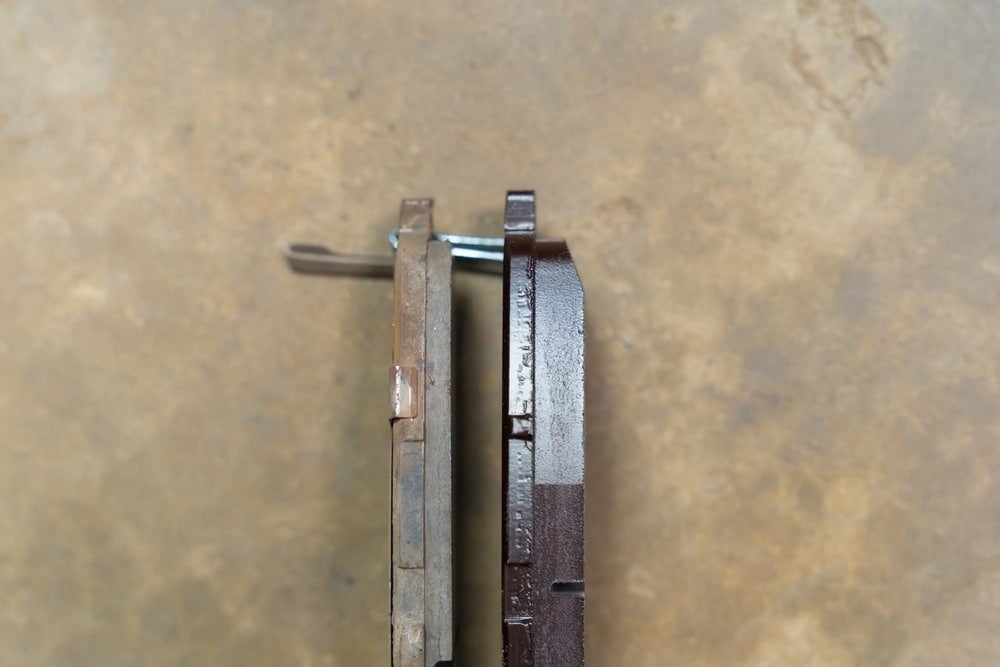
As with all automotive parts, you have a range of products to choose from. If you are on a budget, you can find cheap brake pads. On the other hand, if you are looking for a premium set of pads, they are available too. In almost all cases, you are going to get what you pay for.
The low-cost brake pads are constructed from cheap materials. They won’t dissipate the thermal energy as well, so they don’t last as long. On the other hand, you are paying more for performance brakes, but they handle the heat better for slower wear and increased braking ability.
Here are the three main types of brakes you could be looking at.
- Organic: These inexpensive brakes are quite soft. They may be the least expensive, but will also wear out faster than any other kind.
- Semi-metallic: These brakes are harder than the previous option because there is more durable material included. You get better stopping power and still pay a reasonable cost.
- Ceramic: These are going to manage the heat better than both organic and semi-metallic. The durable material will offer the best resistance to heat, but you are going to pay much more for them.
Ideally, you will choose brake pads that are ceramic if you want more efficiency. With these, you may need to spend more to get a good pair of rotors too. With that said, not every car benefits from high-end brakes. For example, if you have a small hatchback, it’s unlikely that you need performance brakes.
READ MORE: Ceramic vs. Organic Brake Pads (Which is Better?)
Beyond the type, you can be smart about which brand you choose. There’s no reason to purchase the most expensive brand if it’s not what you need. There are plenty of high-quality brake pads for a reasonable cost.
How Often Should I Check Brake Pad Thickness?
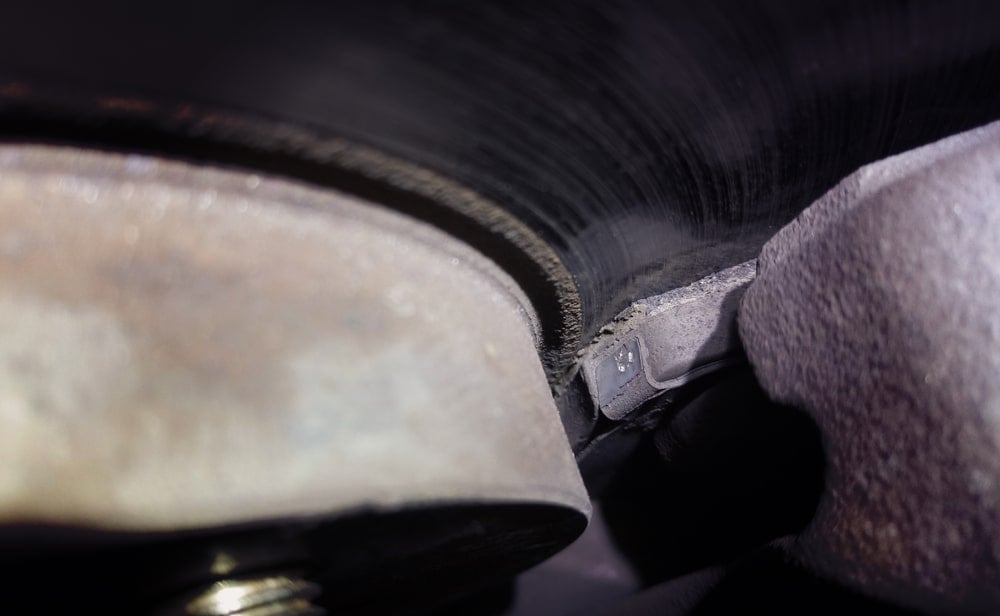
Checking the brake pads should be part of your regular car maintenance schedule. If you take your vehicle to the shop for maintenance, the technicians would probably check the pads every time. However, if you are handling all of this on your own, you would want to look at the pad thickness every 5,000 miles or twice a year.
Brake pads should last far longer than 5,000 miles, but it’s good to keep an eye on the thickness, so you aren’t caught by surprise. Most brake pads are designed to last between 25,000 to 75,000 miles. Rotors can normally go even longer when properly cared for.
In addition to checking the pads at regular intervals, we also recommend taking a peek if you notice any signs of wear. A few of the most common signs of brake pad wear include:
- Squealing noise when braking
- Grinding during braking or driving
- Longer stopping distances
- Pulling to one side while braking
- Vibrations coming from the brake pedal when it’s pushed
If you check the brake pads after noticing these symptoms and don’t see anything wrong, you might want to take the car to the shop. There could be a larger problem occurring within the brake system.
How to Measure Brake Pad Thickness
If you want to know how thick your car’s brake pads are, you can measure them at home. You can also check the brake pads without removing the wheels on many cars, depending on the car model and the rim type. However, here’s how to do it the proper way. All you need is a floor jack, flashlight, lug wrench and brake measuring gauge.
Here are the steps to follow to check the brake pad thickness.
- Park on level ground and place chocks behind the wheels that will sit on the ground.
- Use your floor jack to elevate the side of your car where you will check the pads. You can find good jack position points outlined in your service manual.
- With your lug wrench, loosen up the bolts on the wheel. Carefully take them off and place them in a secure location.
- Take the wheel off of the car, so the brake rotor and caliper are exposed.
- Look through the hole in the caliper. You should see the inside or inboard pad and the outer or outboard pad. If they are difficult to see, use a flashlight.
- With your brake measuring gauge, measure the thickness of the pads. If you don’t have this gauge, you can also use a compass or Vernier caliper.
- Read the measurement from the tool. This shows you how thick the pad is.
- Working reverse order, put the wheel back in place and slowly lower your vehicle back to the ground.
If you have trouble getting the measurements or you need more help, you can reach out to your local auto repair shop. Many shops will offer brake pad inspections for a reasonable price if you get the work done with them.
How to Prolong Brake Pad Life
The life of the brake pads has a lot to do with how you drive. If you don’t consider your road habits, you could be wearing through more brakes than you need to.
For that reason, we’ve put together a few tips to consider.
- Slow down. If you are speeding, you will have to push down even harder with the pads to get the car stopped.
- Coast as much as possible. Instead of accelerating and decelerating frequently, consider coasting when possible.
- Drive with one foot. Don’t let your left foot rest on the brake. In this position, it’s too easy to ride the brakes without even knowing it.
- Keep your distance. Don’t follow other cars too closely. By staying back, you give more time for reaction and you won’t need to brake as often.
- Remove excess weight. Take anything out of the car that you don’t need. Every additional pound is more work on the brakes when it’s time to stop.
Additionally, it’s critical that you follow through on all brake maintenance schedules. Find out when the automaker recommends service and get it done.
Is 4 mm Brake Pads OK?
Once the brake pads go lower than four mm, they are considered to be in the danger zone. At this point, it would be best to have the brake pads changed to ensure your on-road safety. Any lower than this could lead to wear of the rotors as metal starts to contact metal.
How Long Will 3mm Brake Pads Last?
Any decent mechanic is going to tell you to change your brake pads if they measure three millimeters. There’s no reason to see how much longer they could last because failure is possible at any time. To ensure maximum stopping power, it’s best to change them now.
How Thin Is Too Thin On Brake Pads?
Once the brake pads go below six millimeters, they are considered halfway worn. You can get a little more life out of them, but would ideally change them before hitting three millimeters thick. If they are measuring two or three millimeters, there’s no more time to wait.
How Many mm Is Bad Brake Pads?
Once the brake pads go below six millimeters, they are considered halfway worn. You can get a little more life out of them, but would ideally change them before hitting three millimeters thick. If they are measuring two or three millimeters, there’s no more time to wait.
Can Brake Pad Thickness Be Measured Without Removing The Wheel?
If you don’t want to pull the wheels, you may be able to look through the holes to examine the brake pad thickness. While you can’t measure them, you can get a feel for how much is left. Plus, you can look for a wear indicator tab that’s on the side of the pad. If it’s touching the rotor or broken, you might need new pads.
New brake pads measure between 8 and 12 mm thick. Through six millimeters, the brake pads are considered to be in good condition. Once the pads reach four to six millimeters, moderate wear has occurred and you should start to consider a replacement. Beyond this, two to three millimeters is dangerous.
Learning how to measure your own brake pads can help you take control of your maintenance. There’s no reason to put yourself at risk when you know when it’s time to get new pads installed.
Learn more:
- Brake Pad and Rotor Replacement Cost (Full Brake Job Prices)
- Front Brake Job Cost (Rotors, Pads & Additional Parts)
- 7 Symptoms Of A Bad Brake Rotor (& Resurface Cost)
Categories: Brakes, Maintenance
